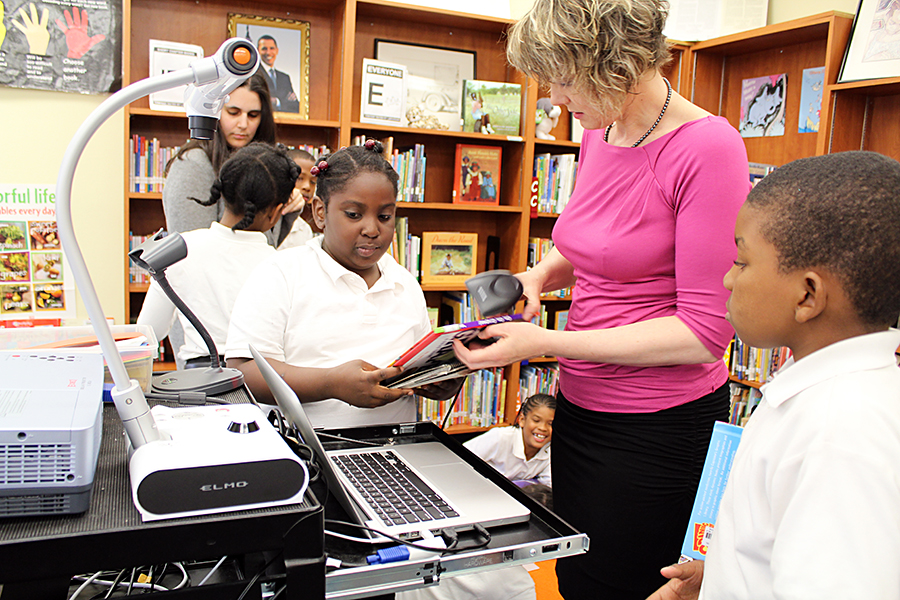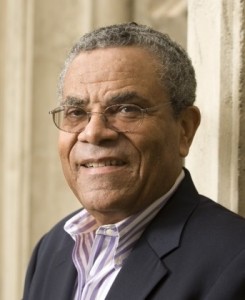 Credit: Lillian Mongeau/EdSource Today
Credit: Lillian Mongeau/EdSource Today2014 has been an exciting year for EdSource, with a more engaged audience on a wide range of education topics, from the Common Core to the Vergara lawsuit. Here are the 10 most popular posts from the year based on how often they were shared via Twitter, Facebook and email.
Don’t forget to follow us on our social media channels: Twitter, Facebook, Google+ and Tumblr.
1. Study: “Self-regulation” helps kindergartners

The most shared story of 2014 was a short report on a study by New York University researchers on the benefits of teaching kindergartners self-regulation skills, such as self-control, paying attention and planning, especially in high-poverty schools, through a program called Tools of the Mind.
Read the story here
2. Report urges revamping student testing

A report written jointly by Stanford University and University of Kentucky researchers urged schools to focus less on annual standardized tests as the main gauge of student achievement. They say there should be far more emphasis on assessments of students throughout the school year as part of their regular classroom instruction.
Read the story here
3. Common Core standards bring dramatic changes to elementary school math

In 2014, elementary school teachers implemented new ways of teaching math based on Common Core standards. Teachers are placing less of an emphasis on memorization of formulas, and instead are expecting students to demonstrate a deeper understanding of math concepts and explain their reasoning as they come up with solutions to problems.
Read the story here
4. At an East San Jose high school, students react to new Common Core test
Read the story here
5. State Board makes it official: No API scores for next two years
The State Board of Education suspended the use of the Academic Performance Index, which has been used for over a decade to measure how students in a school or district are doing. The decision, however, was met with varied opinions from civil rights groups and some education leaders. The API will resume in the 2015-16 school year and will incorporate results from the Smarter Balanced assessments.
Read the story here
6. You’ve got to have faith to be a great teacher (Commentary)
One of the most inspiring posts this year was from a former teacher, Ellie Herman. She shared her insights on five practices of great teachers after observing them in schools teaching students from different socioeconomic backgrounds. What they all had in common was faith – “in their students, in the process of learning and in themselves.”
Read the story here
7. What’s Wrong with the Vergara ruling (Commentary)

Former school superintendent and State Board of Education member Carl Cohn discussed the Vergara v. California ruling, which in June declared certain statutes governing teacher tenure, seniority and other employment protections unconstitutional. Cohn said the ruling “reinforces a completely false narrative in which incompetent teachers are portrayed as the central problem facing urban schools.”
Read the story here
8. School librarians a rare find in California public schools

Read the story here
9. Nine-hour school day is the norm – and a national model – at Oakland middle school
A longer school day isn’t a problem for students at Elmhurst Community Prep, a middle school in East Oakland. The school features an expanded learning program with classes beginning at 8 a.m. and ending at 5 p.m. As a result of the longer day, students are able to participate in after-school activities such as building robots or playing musical instruments. AmeriCorps teaching fellows contribute to the program by helping out during the regular school day and with after-school activities.
Read the story here
10. Districts find new way to fund technology

A new form of school bonds, known as “Ed-Tech bonds,” provides a way for some school districts and community colleges to meet the challenge of paying for new technology in the classroom. In November, voters in three school districts and a community college district approved these low-interest bonds, with a three- to five-year payback period. The short-term bonds allow districts to replace educational technology as it wears out or becomes outdated.
Read the story here
To get more reports like this one, click here to sign up for EdSource’s no-cost daily email on latest developments in education.
















Comments
Comments Policy
We welcome your comments. All comments are moderated for civility, relevance and other considerations. Click here for EdSource's Comments Policy.